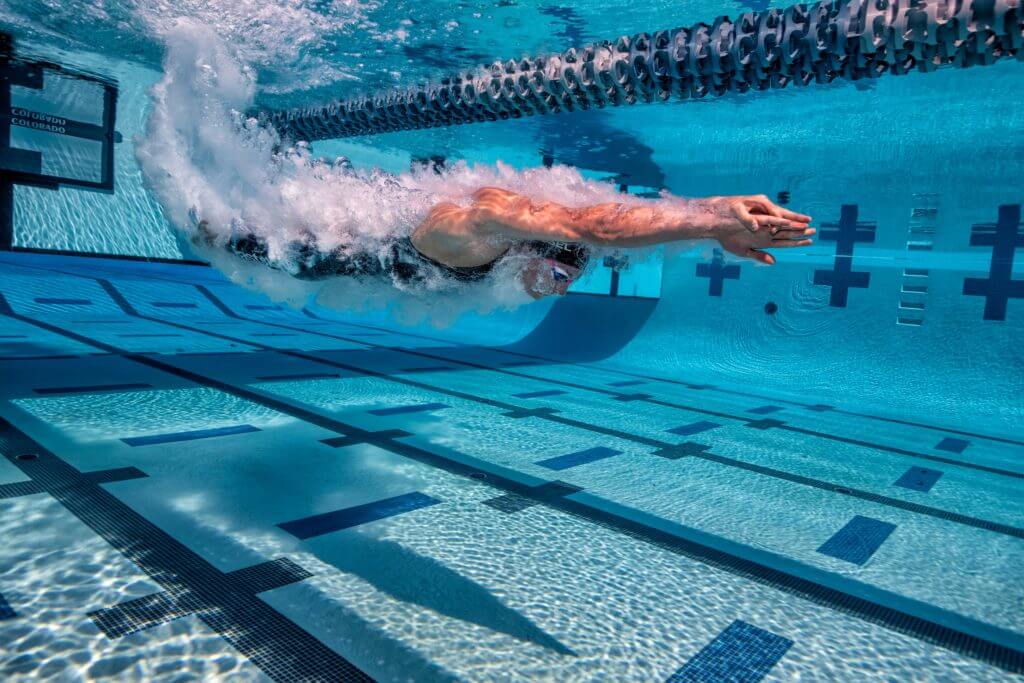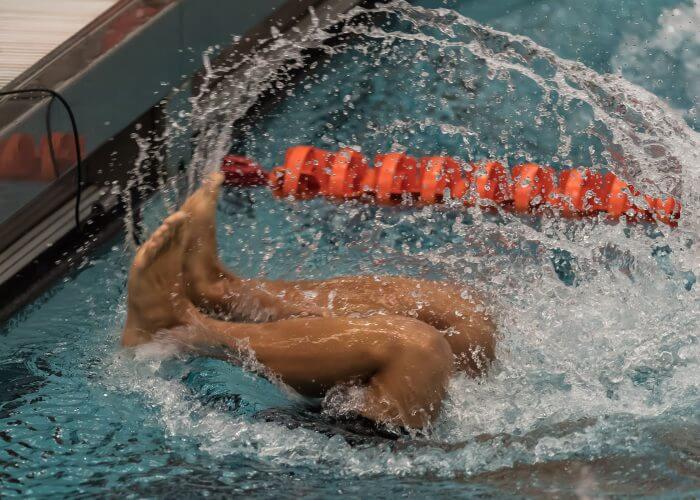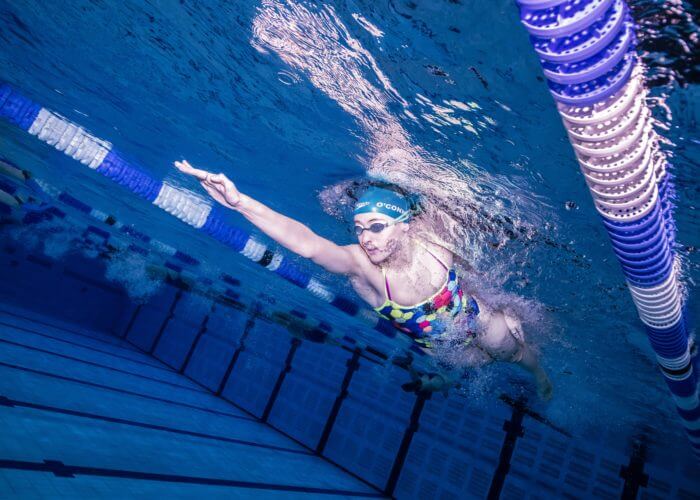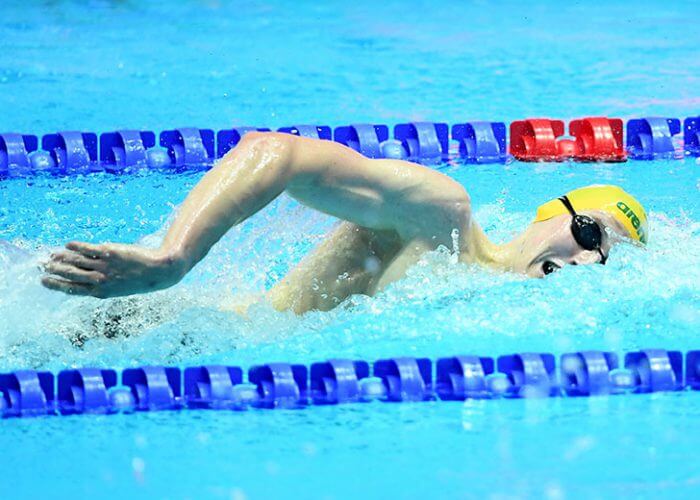Cutting Time: Tips For Improving Turns, Underwaters and Breakouts

Cutting Time: Tips For Improving Turns, Underwaters and Breakouts
One of the most effective ways to drop time quickly is to improve your turns, underwaters and breakouts. Sloppy transitions can easily add time to a race. When you’re performing them well off every wall, those seconds add up quickly. But, it’s not always easy to focus on making them fast. We’ve all been there. You’re in the middle of a tough set, lungs burning, and all you’re thinking about is making that interval. The last thing you want to worry about is doing a perfect turn, strong underwaters or a crisp breakout. Here are some tips and tricks to improve your turns, underwaters and breakouts during training and in a race.
How to Improve Turns
1. Don’t look up before your turns

Photo Courtesy: Peter H. Bick
Many swimmers look up at the wall just before their turns, which makes sense. You want to see the wall, gauge your distance and start your turn at the right time. However, lifting your head up just before your turn adds resistance and immediately slows you down. Instead, use the “T” on the bottom of the pool to gauge your distance from the wall. You’ll be able to get into the wall more quickly and your head position will be ideal for quickly tucking into a flip turn or staying low on an open turn.
2. Think about accelerating into the wall
It’s easy to slow down as you’re heading into a turn, and you might not even realize that you’re doing it. When you’re tired, a turn feels more like a time to take a moment of rest rather than a moment to pick up the pace. In order to prevent this, think about increasing your speed from the flags into the wall and attacking your turn. Keeping a strong and consistent kick all the way into your turn is essential to prevent loss of speed.
3. Work on explosion outside of the pool
Pushing off the wall after a turn should be explosive. You can condition your legs outside of the water to maximize power when pushing off of the wall. Weighted and bodyweight squat jumps help build up your leg muscles and simulate pushing off the wall. Streamline squat jumps can even more closely simulate your body position when pushing off the wall.
How to Improve Underwaters
1. Focus on both your “up” and “down” kicks

Photo Courtesy: MIKE LEWIS
Swimmers often think solely about the down kick when doing a dolphin kick, but the up kick is a great opportunity to add even more speed to your underwaters. Instead of thinking of the up kick as moving your feet back into position for your down kick, think of it as another opportunity to increase your power.
2. Be consistent in training
It’s nice to have great underwaters on the first lap of your race, but it’s even better to have consistent and strong underwaters throughout your whole race. Don’t slack off on underwaters during practice. Work on staying consistent and training to have great underwaters even when you’re tired. Try doing the same number of underwaters off of every wall while practicing your event at race pace.
3. Use a tempo trainer
Increasing the speed of your dolphin kicks can help make your underwaters more efficient and your breakouts more explosive. Try using a tempo trainer to speed up your underwaters and keep the pace consistent all the way up to your breakout.
How to Improve Breakouts
1. Make your first stroke powerful

Photo Courtesy: Delly Carr
It’s easy to glaze over your first stroke because you’re thinking about getting to the surface and racing. But, a lot of power and speed can come from having a strong first stroke. Try practicing your first stroke from a standstill position in the pool. The lack of momentum will force you to take an especially powerful stroke.
2. Break out at the right time
Breaking out too early or too late can cause you to lose momentum from pushing off the wall, slowing you down. Practice breakouts at race pace and keep track of exactly how many underwaters you plan on doing or how long your pull-down will be. Performing breakouts in practice exactly as you expect to swim them in a race will help you make sure you won’t break out too early or too late in your race.
3. Don’t take a breath on your first stroke
This one may seem obvious, but it’s easy to forget when you start to get tired. Breathing on your first stroke can cause you to lose the momentum you gained from your explosive turn and strong underwaters. If you start building good habits and commit to not breathing on your first stroke for just a few practices, pretty soon you won’t need to think about it anymore.
Dropping time from a race isn’t easy, but focusing on improving your turns, underwaters and breakouts is a great place to start.
All commentaries are the opinion of the author and do not necessarily reflect the views of Swimming World Magazine nor its staff.




I appreciate the tips this article offers. Streamline position jumps off the pool bottom in about 5 to 6 feet depth are also a good drill. They offer the advantages of pushing against water resistance similar to pushing off the wall, and less risk of injury when compared to jumping on land and having your full body weight affect your body parts on landing. The jumps can be done in sets of 10, 20, 30, or more, and could even be done with interval training. A swimmer can very quickly do nearly as many jumps off the pool bottom as they would typically do during push offs and turns in an entire swim workout. The in water jumps will get the heart rate up while building leg strength and improving push offs.